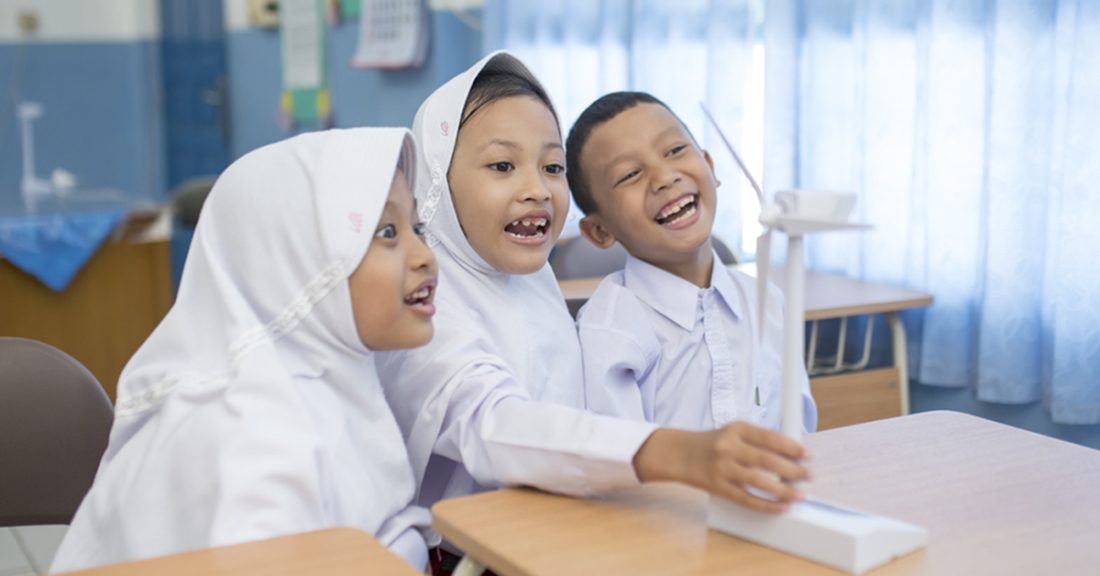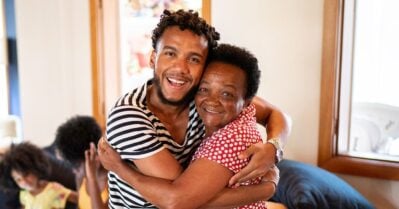Asian and Native Hawaiian and Pacific Islander Child Poverty and Economic Well-Being

Many indicators of socioeconomic status by race and ethnicity lump all Asian American (AA) and Native Hawaiian and Pacific Islander (NHPI) children together and, as a result of averaging out differences, they often suggest that these kids are doing better than others. In reality, the diverse AA and NHPI child populations experience vastly different socioeconomic outcomes.
To shed light on these differences, the KIDS COUNT® Data Center commissioned a special analysis of the latest data on child poverty and parental education levels disaggregated by AA and NHPI population. These data are available as five-year estimates for 2019–2023 from the Census Bureau’s American Community Survey.
Asian American Children in Poverty
As expected, when poverty data are broken out by specific population, the figures exposed wide disparities across groups. First, the difference between AA and NHPI children is stark: The NHPI child poverty rate is 20% — double the rate (10%) for AA children.
Looking across AA populations, even wider disparities emerge. Close to 1 in 3 (29%) Burmese American children and more than 1 in 5 Thai (22%) and Bangladeshi (21%) American children were living in poverty in 2019–2023, compared with 5% of Asian Indian, Bhutanese and Taiwanese American kids. Poverty rates are also high for Hmong, Cambodian, Laotian and Pakistani American children, with at least 16% of kids in each group living below the poverty level.
Table 1: Asian American Children Under 18 in Poverty, Disaggregated by Asian Population (2019–2023)
Population |
Number |
Percent |
| Burmese | 20,339 | 29% |
| Thai | 4,810 | 22% |
| Bangladeshi | 13,571 | 21% |
| Hmong | 20,121 | 18% |
| Cambodian | 8,665 | 16% |
| Laotian | 4,424 | 16% |
| Pakistani | 23,671 | 16% |
| Vietnamese | 41,564 | 13% |
| Sri Lanken | 1,199 | 11% |
| Chinese, except Taiwanese | 74,730 | 11% |
| Nepalese | 5,323 | 10% |
| Indonesian | 1,235 | 10% |
| Korean | 18,951 | 9% |
| Japanese | 5,761 | 8% |
| Filipino | 24,205 | 6% |
| Bhutanese | 233 | 5% |
| Asian Indian | 50,528 | 5% |
| Taiwanese | 1,771 | 5% |
Total for Asian American Children |
370,685 |
10% |
Note: Estimates shown have 90% confidence intervals with margins of error below five percentage points. Source: PRB analysis of 2019–2023 ACS PUMS 5‑year data.
The data revealed varying levels of poverty among NHPI groups, too. The lowest child poverty rate was 11% for Tongan kids, less than half the rate (25%) for Samoan children.
Table 2: Native Hawaiian and Pacific Islander Children Under 18 in Poverty, Disaggregated by Population (2019–2023)
Population |
Number |
Percent |
| Samoan | 6,072 | 25% |
| Native Hawaiian | 6,928 | 18% |
| Chamorro | 1,906 | 14% |
| Tongan | 1,075 | 11% |
Total for NHPI Children |
30,585 |
20% |
Note: Estimates for Marshallese and Fijian children are not shown because the margins of error were above five percentage points. See the note below Table 1.
All of these AA and NHPI kids are not, in fact, faring better than the national average or their peers in other racial and ethnic groups, as aggregated data often suggest.
Asian American Children and Economic Well-Being
Other measures disaggregated by AA and NHPI population show substantial socioeconomic differences among groups as well.
Children in Families Where the Household Head Did Not Complete High School
As illustrated in Table 3, 62% of Burmese children lived in a family where the head of household lacked a high school degree — over six times the average for all AA children (10%). Among NHPI populations, this figure ranged from 7% for Native Hawaiian and Samoan kids to 12% for Tongan children, among groups with available data.
Table 3: Asian American Children Whose Household Head Lacks a High School Degree, Disaggregated by Population (2019–2023)
Population |
Percent of Children |
| Burmese | 62% |
| Nepalese | 20% |
| Cambodian | 20% |
| Vietnamese | 18% |
| Laotian | 17% |
| Hmong | 15% |
| Thai | 14% |
| Chinese, except Taiwanese | 12% |
| Bangladeshi | 11% |
| Pakistani | 10% |
| Sri Lankan | 7% |
| Indonesian | 4% |
| Filipino | 4% |
| Asian Indian | 4% |
| Mongolian | 4% |
| Japanese | 2% |
| Korean | 2% |
| Taiwanese | 1% |
Total for Asian American Children |
10% |
Note: Estimates included have 90% confidence intervals with margins of error below five percentage points. Source: PRB analysis of 2019–2023 ACS PUMS 5‑year data.
Table 4: Native Hawaiian and Pacific Islander Children Whose Household Head Lacks a High School Degree, Disaggregated by Population (2019–2023)
| Population | Percent of Children |
|---|---|
| Tongan | 12% |
| Chamorro | 11% |
| Fijian | 10% |
| Samoan | 7% |
| Native Hawaiian | 7% |
| Total for NHPI Children | 11% |
Note: Estimates included have 90% confidence intervals with margins of error below five percentage points. Source: PRB analysis of 2017–2021 ACS PUMS 5‑year data.
Children in Poverty Whose Parents Did Not Complete High School
One in 3 (33%) Asian American children living in poverty have parents who did not finish high school, according to a 2022 report from the National Center for Education Statistics. Among Asian-alone populations with data,* the share of children in poverty whose parents lacked a high school degree was:
- Pakistani: 48% in 2021
- Burmese: 40%
- Chinese, including Taiwanese: 37%
- Vietnamese: 26%
- Asian Indian: 25%
Among Pacific Islander kids whose parents did not finish high school, more than 2 in 5 (42%) were living in poverty (not disaggregated by population).
*Data for a few additional Asian populations are provided by the source, noting that those figures should be interpreted data with caution due to coefficients of variation between 30% and 50%. Data availability for each population varies by year.
Unstable Housing
The Center for Disease Control and Prevention’s 2023 Youth Risk Behavior Survey found that NHPI high school students were more likely than students of other racial and ethnic backgrounds to have unstable housing. This is defined as not having a usual place to sleep or sleeping in someone else’s home, in a shelter or emergency housing, in a motel, in a car or another public place during the past month. While these data are not disaggregated by specific population, they highlight concerning housing needs for NHPI families. The share of U.S. high schoolers with unstable housing was:
- Total: 3%
- Native Hawaiian and Pacific Islanders: 11% and
- Asian-alone: 3%.
These examples reinforce the need to disaggregate data by population — especially indicators measuring child or youth well-being — as they reveal the disparate conditions of children and families among Asian-alone and NHPI groups. By contrast, aggregated data for “Asian and Pacific Islander children” treat this incredibly heterogeneous group as a singular block and mask disparities among these populations. The data presented here clearly show that certain groups are facing greater socioeconomic needs.
Leaders and service providers can use these data to inform policies and programs, strengthening outreach to populations with the greatest needs and ensuring that families receive adequate safety net support and other services.
Read the Rest of Our Series on AA and NHPI Young People
- Asian American, Native Hawaiian and Pacific Islander Children Are Not a Monolith
- Education and the Model Minority Myth
- Mental Health and Asian American and Native Hawaiian and Pacific Islander Youth
- The Adverse Effects of Racial Discrimination on Asian American Kids
A Note About Language
We use the term “Asian Americans” in this post to refer to both Asian immigrants and U.S. citizens of Asian descent, as the term reflects the vast majority of this population, especially among children.






